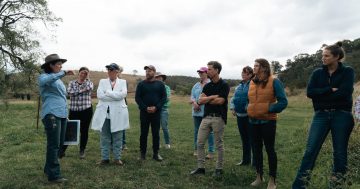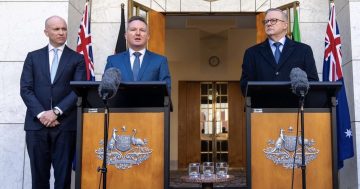
Global boiling is a real prospect, but there are things that can be done. Photo: File.
Don’t despair. ‘Global boiling’ may be on the way but there are plenty of brilliant ideas at hand to help lower the risks and protect us.
We can adapt to climate change if we can just smash through some time-wasting barriers, like the short-term profit focus of many businesses and the bureaucratic inertia left by a decade of climate denialism.
The UN chief Antonio Guterres’ anxiety-inducing warning last week – that we’re facing ‘global boiling’ if governments don’t act on climate change fast – is sadly true.
The heatwave we’re witnessing in the northern hemisphere was predicted, but climate change has arrived sooner than expected.
Despair isn’t an option. Hope, optimism and ‘new thinking’ is what’s needed to discover and deliver smart solutions.
Take, for instance, the exciting ideas emerging from the ANU’s Institute for Climate, Energy and Disaster Solutions (ICEDS). The centre’s Associate Professor Roslyn Prinsley is an expert in disaster response and management.
She’s brought together scientists from across the university to come up with game-changing solutions to prevent and better prepare us for big climate change impacts such as bushfires, cyclones and floods.
A challenge Professor Prinsley set for the multi-disciplinary team was to stop tiny fires in remote areas from turning into giant bushfires by detecting and extinguishing them within minutes.
Some ideas they’ve come up with involve drones, fire towers, satellites, high-altitude balloons or ground sensors detecting fires minutes after they’ve been lit, usually by lightning.
A water glider the team has designed would then fly in and rapidly put them out. Engineering students are working on other fire suppression technologies that can be rapidly deployed.
So, the NRMA insurance ‘Until Then’ ad in which a farm fire is quenched in seconds isn’t that far-fetched.
Stopping or reducing the intensity of cyclones is another challenge Professor Prinsley set for the team.
Cloud seeding, ocean cooling or injecting tiny particles into the stratosphere to reflect sunlight back into space are some of the ideas being examined.
Devastating floods have taught us a lot, like not building on flood plains for a start. On this, the ICEDS disaster team are thinking about how to harness nature by recognising the ecological benefits of big floods while protecting communities.
A two-year project will see ICEDS deliver Australia’s first nature-based flood guidelines.
“We need a new way of thinking” to adapt to climate change, Professor Prinsley says.
That means incorporating disaster resilience in everything we do and backing ‘transformational solutions that stop disasters in their tracks’.
Not only will it save lives and livelihoods, but it will also cut the huge cost of disasters.
Of the $24.5 billion Australia spent on disasters in 2005-2022, 98 per cent went to response and relief. Just two per cent went to preventing or preparing for disasters.
Professor Prinsley estimates that climate change will cost our economy $73 billion every year by 2060. This represents the huge cost of our current lifestyle our kids will shoulder.
It’s hard to get your head around. I won’t be here in 2060 but my son will be, and it’s not fair.
My climate optimism is challenged by new housing developments.
The ACT boasts its climate credentials. And yet, in Dickson another high-rise development has been unveiled with no eaves to cut the sun over any of the windows, even those facing dead west.
These ovens will be cooled by air conditioning, which will suck up loads of energy. Even if it’s renewable, it’s costly for residents.
Is there a roof garden to cool the building down and provide the residents amenity?
Where are the trees and shade structures to cool down the swathes of heat-generating concrete surrounding new apartments?
Decades ago, I recall an IAG insurance representative explaining its work on the best roofing material to withstand large hailstones, expected with climate change.
Shooting a hail gun into roof tiles proved only corrugated iron would withstand big hail.
We found that out a few summers ago in Canberra. So why are we still building houses with tiled roofs as insurance costs rise?
Proven climate-resilient housing ideas have been around forever, and yet government timidity in the face of the construction industry resistance continues to deliver us substandard homes.
Here’s an idea for the Albanese government: mandate that all housing funded under the Housing Future Fund (if we ever see it) is climate resilient.
My climate change optimism comes from witnessing many extraordinary feats of human ingenuity that we’ve all benefitted from.
Coupled with our highly successful survival instinct, human smarts can see us adapt to climate change and most importantly, reduce its effects or even stop it. All it takes is gutsy governments.
















